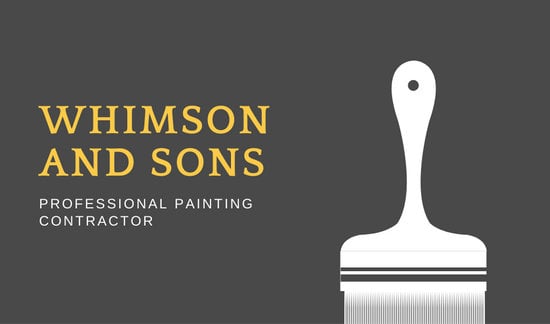Seasonal Factors To Consider For Commercial Outside Painting: What You Need To Know
Seasonal Factors To Consider For Commercial Outside Painting: What You Need To Know
Blog Article
Write-Up Written By-Regan Bagger
When you're planning a business external painting task, seasonal factors can make or damage your results. You'll want to consider how temperature and humidity influence paint application and drying times. Picking the appropriate season can guarantee your paint sticks effectively and lasts much longer. But which seasons are really the most effective for this kind of job? Allow's check out the key elements that can influence your task's success.
The Impact of Temperature Level on Paint Application
When you're preparing a business external painting job, the temperature can considerably affect exactly how well the paint sticks and dries out.
Ideally, https://www.kcur.org/arts-life/2022-12-09/after-25-years-away-a-kansas-city-painter-returns-home-to-stretch-out-her-canvas-and-her-ambitions wish to repaint when temperatures vary between 50 ° F and 85 ° F. If it's also chilly, the paint might not treat effectively, leading to issues like peeling or cracking.
On the other side, if it's also warm, the paint can dry out also promptly, avoiding proper attachment and causing an unequal coating.
You must also consider the time of day; morning or late afternoon supplies cooler temperature levels, which can be a lot more positive.
Constantly examine the producer's recommendations for the certain paint you're utilizing, as they usually offer advice on the excellent temperature variety for ideal outcomes.
Humidity and Its Effect on Drying Times
Temperature level isn't the only environmental aspect that influences your industrial exterior painting project; humidity plays a significant duty as well. https://exterior-house-painters-n88765.ziblogs.com/35152258/discover-exactly-how-to-successfully-communicate-your-vision-to-your-paint-contractor-and-make-sure-an-effective-task can decrease drying times drastically, impacting the general top quality of your paint task.
When the air is saturated with moisture, the paint takes longer to heal, which can bring about issues like poor attachment and a greater threat of mildew growth. If you're painting on an especially humid day, be prepared for prolonged delay times between layers.
It's critical to keep track of local weather conditions and strategy accordingly. Preferably, mouse click the following website page for humidity levels between 40% and 70% for ideal drying out.
Keeping these factors in mind guarantees your job remains on track and supplies a long-term surface.
Best Seasons for Commercial Outside Paint Projects
What's the best time of year for your business external paint jobs?
Spring and early autumn are normally your best options. Throughout these periods, temperatures are mild, and humidity degrees are often lower, creating excellent problems for paint application and drying.
Avoid summer's intense heat, which can create paint to completely dry too promptly, bring about bad adhesion and surface. Similarly, winter season's cold temperature levels can impede correct drying and healing, taking the chance of the long life of your paint job.
Go for days with temperature levels between 50 ° F and 85 ° F for optimum results. Bear in mind to inspect the regional weather report for rain, as wet problems can destroy your project.
Planning around these factors ensures your painting task runs smoothly and lasts much longer.
Final thought
Finally, intending your commercial exterior paint tasks around seasonal factors to consider can make a considerable difference in the outcome. By scheduling job during the excellent temperatures and humidity degrees, you'll make certain far better adhesion and drying times. Keep in mind to keep an eye on neighborhood weather forecasts and select the right time of year-- springtime and very early fall are your best bets. Taking these actions will certainly help you achieve a sturdy and professional coating that lasts.
